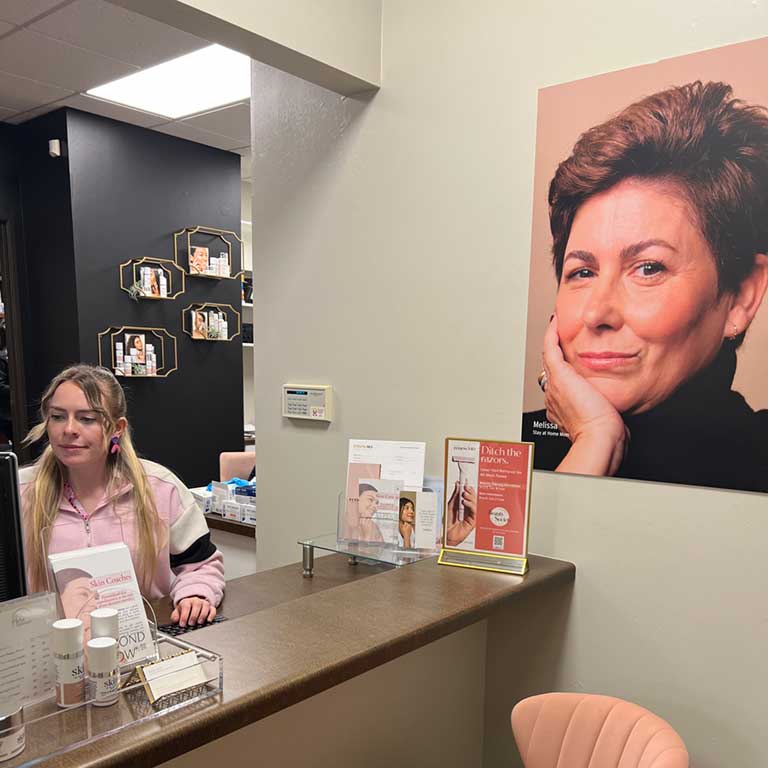Melasma can be tricky to manage, especially considering how little research exists on it, even though it’s a common skin condition. If your melasma has become stubborn and resistant to your skincare routine, you may want to consider implementing stronger skin treatments to target affected areas.
Of course, melasma changes the skin on a cellular level, which can cause it to react differently to some skincare methods and ingredients. Therefore, people with this condition should be careful in choosing treatments, as not all tactics will benefit skin with melasma. Luckily, some therapies can break up the pigment caused by melasma and stimulate collagen growth without aggravating skin cells.
On The Skin Report podcast, Dr. Simran Sethi, an Internal Medicine doctor and the Founder and Medical Director of RenewMD medical spas, shares her knowledge of different treatments that can be safe and effective for people with melasma. In addition, she explains how various therapies affect this skin, including chemical peels, microdermabrasion, facials, and laser treatments.
Skin Therapies for Melasma
Melasma is a common skin issue amongst people with darker skin types. There are many reasons why the condition may become advanced, but this usually occurs because patients with melasma are advised against treatment options or have been treated through inappropriate methods that worsen their symptoms.
With melasma, pigment is produced in the epidermis and seeps into the deeper dermis layer through the skin’s basement membrane. As a result, the pigment becomes trapped in the dermis and is almost untouchable with most skincare and technologies. Therefore, not all skin therapies can safely and effectively treat hyperpigmentation in skin impacted by melasma.
Microdermabrasion
Microdermabrasion is a minimally invasive therapy used to treat skin tone and texture by ‘polishing’ off the outermost skin cell layer of keratinocytes. This helps other skincare penetrate deeper and can improve the skin’s look and feel. Still, this is ineffective in improving melasma, as microdermabrasion polishes off the dead cell layer at the very top of the epidermis, and any products applied can not penetrate past the epidermis.
Facials
Facials are also very limited in reducing pigment caused by melasma, as they are only able to target pigment in superficial skin layers. This is why a facial can never make a noticeable difference in melasma pigment reduction and should not be considered a suitable treatment for melasma.
Chemical Peels
Chemical peels can help to reduce pigment in the skin’s epidermis. However, if the patient’s melanin is deposited in the dermis, their pigment is often too deep to reach through chemical peels. Furthermore, chemical peels often contain a high dose of hydroquinone, retinol, lactic or glycolic acids, which can aggravate skin with melasma.
The Low-down on Laser Treatments
As a physician who commonly treats patients with melasma, Dr. Sethi has developed tougher treatment combinations and variations in the energy used to rejuvenate the skin and break pigment. Safe melasma treatments do exist, but they must be customized based on the patient’s depth of the pigment, skin type, and how long-standing the skin condition has been.
While chemical peels, microdermabrasion, and facials mainly target superficial skin layers, laser treatments can penetrate deeper into the skin. Laser treatments are a broad category of devices that deliver energy and use heat or light to penetrate the epidermis and dermis to stimulate collagen production.
Since heat and light can worsen melasma symptoms, professionals often advise against laser treatments for people with melasma. Therefore, technologies like Intense Pulse Light lasers, fractionated or CO2 lasers, clear and brilliant, and Halo are unsuitable for melasma treatment as they generate heat or light that will further stimulate overly active melanocytes.
However, the Picosure laser may effectively break up the pigment and stimulate collagen growth without aggravating skin cells. This laser delivers energy quickly so that it doesn’t have time to convert to heat or light as it reaches the epidermis or dermis. This means that the Picosure laser can reach the dermis quickly to use vibrational force to shatter pigment and stimulate a reaction that causes the skin to make new collagen.
To learn more about how the Picosure laser can be used to treat hyperpigmentation caused by melasma, listen to season 1, episode 23 of the Skin Report podcast.








Leave A Comment